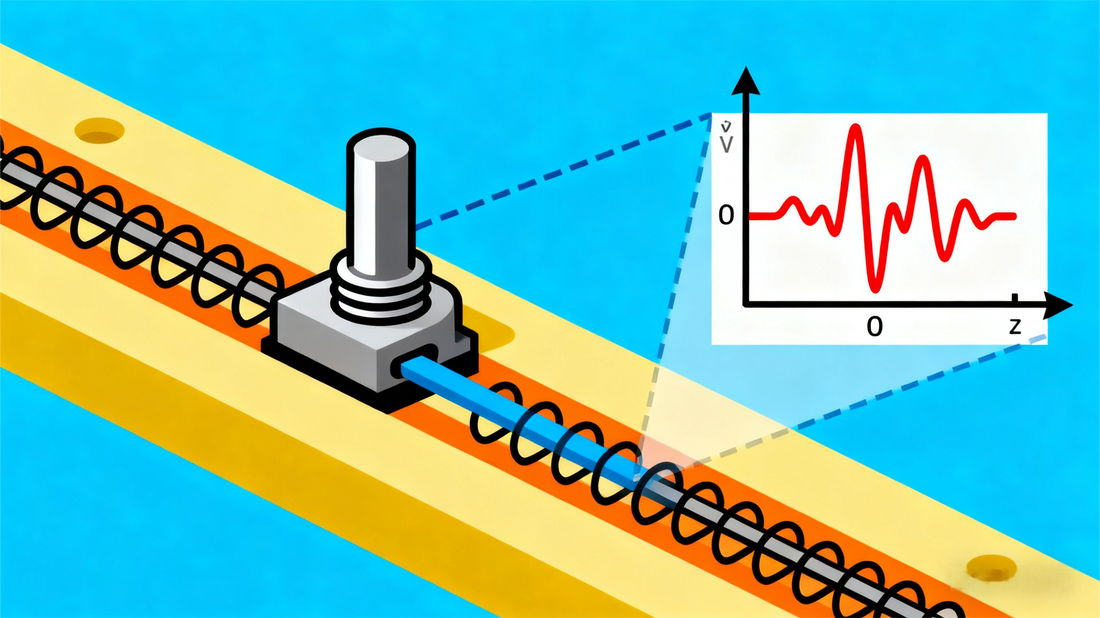
Potentiometers 101: How This Tiny Component Controls Your Audio, Lights, and Even Agricultural Machinery
Share
What is a Potentiometer? Understanding Its Role and Uses
A potentiometer is a type of resistor with three terminals that lets you adjust voltage in electronic circuits. You’ll find them in devices like volume knobs on stereos and dimmer switches for lights, where changing the output is important.

Types of Potentiometers
There are different types of potentiometers, each designed for certain uses:
- Rotary potentiometers :They are the most common. You adjust them by turning a knob or a shaft.
- Linear Potentiometers: These adjust by sliding a contact along a resistive track. They’re often used when you need more direct control over resistance.
- Digital Potentiometers: Used in digital systems, these are controlled electronically to adjust resistance.
How Does a Potentiometer Work?
A potentiometer works by changing the resistance between two contacts, usually with a slider or knob. Adjusting the resistance changes the output voltage, which lets you control how the circuit behaves.

Common Applications of Potentiometers
Potentiometers are found in many everyday devices. Some of the most common applications include:
- Audio Equipment: In volume control or tone adjustment.
- Lighting: For dimming lights.
- Measurement Systems: Used in sensors to detect positions.
- Automotive: In car controls, such as adjusting the brightness of dashboard lights.
Potentiometer Symbol
In circuit diagrams, the potentiometer is represented by a symbol that looks like a resistor with an arrow through it. The arrow indicates the adjustable contact point, and it varies the resistance between the two outer terminals.
How to Wire a Potentiometer
Wiring a potentiometer typically involves connecting the three terminals to a circuit. The middle terminal is the wiper (the adjustable part), while the two outer terminals are connected to the fixed resistance. The middle terminal provides the adjustable output voltage.

Here’s how to wire a potentiometer:
- Middle terminal (wiper): Connect this terminal to the signal you wish to control, such as a voltage divider circuit or audio input.
- Outer terminals: One connects to the input voltage (typically a power source), while the other connects to the ground or the system’s reference voltage.
Why Choose a Hybrid Potentiometer?
A hybrid potentiometer combines the features of both rotary and linear potentiometers. This type offers more flexibility and is ideal for applications where precise control is essential. Hybrid potentiometers are often used in high-performance audio systems, scientific instruments, and advanced industrial devices.
Where Can You Find a Potentiometer Shop Near Me?
At DELEYAPARS, we offer a range of potentiometer products suited for various applications in agricultural, automotive, and industrial machinery.What's more, we can deliver all our products worldwide. For example, we provide:
- Potentiometer 87605247 for New Holland: Ideal for machinery control systems, ensuring efficient performance in agricultural equipment.
- Throttle Position Sensor 82021035 for New Holland: Perfect for vehicles that require precise throttle control.
- Potentiometer Sensor RE261356 for John Deere: Specifically designed for John Deere machinery, providing optimal control in agricultural machinery systems.
These potentiometer sensors are built to replace OEM parts, ensuring a direct fit and reliable performance, which reduces downtime and maintenance costs.
FAQ: Common Questions About Potentiometers
Q1: What is the difference between a potentiometer and a resistor?
A potentiometer is a variable resistor that allows you to adjust its resistance, while a regular resistor has a fixed resistance value.
Q2: How do I know which potentiometer to choose for my device?
You need to consider factors like resistance range, voltage rating,OE and the type of potentiometer (rotary, linear, or digital) that suits your application.
Q3: Can potentiometers be used in industrial machinery?
Yes, potentiometers are widely used in industrial machinery for applications such as controlling the position of parts, regulating motor speeds, and adjusting other mechanical controls.
Q4: How can I wire a potentiometer into my circuit?
To wire a potentiometer, connect one outer terminal to the input voltage, the other outer terminal to ground, and the middle terminal (wiper) to the signal you wish to control.